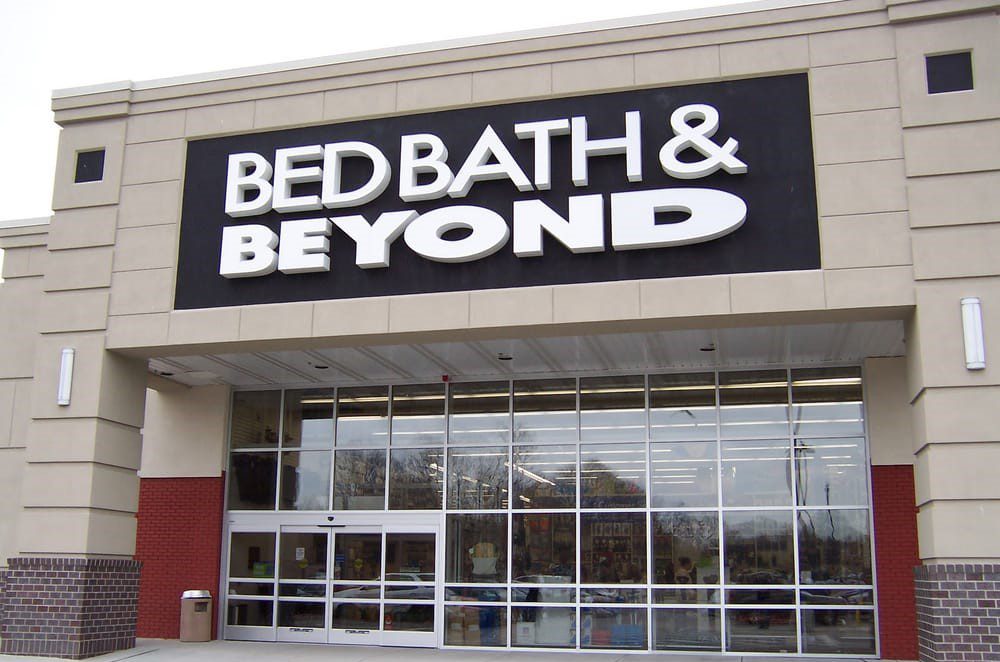Bed Bath & Beyond’s Failure and the Lessons for Any Retailer
Before struggling to survive in this intense competitive retail industry, Bed Bath & Beyond was considered a beast that other competitors had to bow their heads down. Let’s take a look at the history of this massive retail chain including the founding period up to now.
Bed Bath & Beyond was once the leader of home goods, they attracted numbers of shoppers everywhere with the strategy “category killer” that is still now adopted by other huge retailers like Best Buy, Walmart, Amazon. Unlike other retail stores in the previous stage who were only able to provide limited products with few options, Bed Bath & Beyond was famous for its category, they have a variety of different products ranging from colors, size, styles. This strategy was so successful that at that time this retail store was regarded as a “go-to” destination where the shoppers can buy anything and everything for their home.
The History of a Giant Retail Chain Company
In 1971, two co-founders of Bed Bath & Beyond, Warren Eisenberg and Leonard Feinstein established their first store in New Jersey. However, initially, it was called Bed ‘n Bath which implies that its focus is on linens and bath products only. Later, the company rebranded itself to Bed Bath & Beyond in 1987.
While in the 1970s, this brand expanded its location to mainly New York and California, later the 1980s, they had to face some competitors such as Linens ‘n Things which created an intense competing environment in the home decorator sector.
The strategy to succeed in retail industry

To set itself different from the other home retail stores, Bed Bath & Beyond launched its first superstore that has a size of 20,000 square foot which was believed to become the model for the future Bed Bath & Beyond store. This huge store sells a wide range of products with different brands, colors, sizes that could please even the most irritating customers.
The strategy “category killer” has been so popular currently, but at that time, Bed Bath & Beyond was the winner of the game thanks to the fact it was one of few retail stores that could apply for their business. As a result, this brand developed faster over the next few years, it opened more superstores in lots of areas of the US such as New Jersey, California, Virginia, Illinois, Maryland, and Florida.
In fact, this new model superstore helped the brand to increase its sales rapidly. In detail, their sales increased sharply to $134 million by 1991. Understandably, this brand did not stop its ambition, it added new popular categories such as electric appliances. Bed Bath & Beyond grew bigger through times, it even reached $1 billion in sales in 1999. By the start of the millennium, this brand owned 311 stores in 43 states of the US. In 2002, they started their acquisition with smaller businesses, for instance, they acquired Harmons and later Buy Buy Baby in 2007, additionally, they continued to purchase Linen Holdings and Cost Plus World Market in 2012.
Bed Bath & Beyond Is Losing Their Market
Above is the success story of an iconic brand of the US, who would have thought that this brand could go to extinction one day. Yet this is happening to this brand and some other home brands that were founded earlier like Linens ‘n Things. They failed to compete with their younger rivals such as Amazon.
While Amazon gradually gets more and more sales each year, more investors do not hesitate to invest in this company, Bed Bath & Beyond faced the opposite situation. Although its sales have slightly increased, they gained no profit but lost these current years. More specifically, it was reported that the overall sales increased from $7,2 billion in 2009 to $12 billion in 2019, however, this brand same-store sales decreased in 2017, 2018 and 2019. In the first quarter of 2019, same-store sales fell more than 6,6% over the same quarter in the previous year, which leads to the fact that its net income decreased dramatically from $1,03 billion profit to -$137 million loss in 2019.
The ignorance of e-commerce
It is understandable that standing on the top of the world and defeating other rivals easily has created an illusion for this giant retailer chain to think that there was no need for investing in their e-commerce field. This is such a huge mistake because the era has changed, people now prefer to shop online more since it is easier and cheaper.
It is believed that while e-commerce companies like Amazon, Wayfair are getting increasing sales thanks to their simple and friendly website, Bed Bath & Beyond is doing the opposite, their customers have to go through several steps to complete a purchase. In this world of digital natives, the simpler and easier thing which can be done online will be more liked which leads to the fact that Bed Bath & Beyond is losing their market and profit gradually.
Messy display of products
Moreover, the arrangement and display of products in Bed Bath & Beyond stores are also complained by the shoppers, they believe that the company’s brick-and-mortar stores as well as sections are said to be overstocked with a dizzying array of choices. During a presentation to the shareholders, it is counted that one Bed Bath & Beyond store has different frying pans from 18 vendors, or there are also a lot of trash cans that vary from size to color. The customers would like to shop if there are a variety of products, however, when it’s too much, there will be no longer amusement but the confusion.
Additionally, most of the products of Bed Bath & Beyond store which vary from size, color to shapes can be found online, the customers can just use their mouse and click to buy the cheaper products from even another retailer store, which explains that it is getting harder for Bed Bath & Beyond to compete with other major competitors. Thus, to save itself from extinction, the company has decided to give more coupons to the customers with the hope of attracting them to purchase. However, the truth is that attractive coupons have pushed down margins without driving any new traffic into the stores.
Ineffective cost strategy
Besides, Bed Bath & Beyond’s costs are also high, the General and administrative expenses have risen 55% since the fiscal year 2011, growing from about 25% of sales that year to just over 30% in the fiscal year 2018. The board of directors has taken some of the blame for locking the expertise from a fresh perspective to keep up with the market. It is believed that while other major competitors like Best Buy, Amazon purchase their goods directly from overseas manufacturers for less money, Bed Bath & Beyond still have their products purchased from the local manufacturers and this brings a huge difference among these companies.
Nepotism and corruption
Bed Bath & Beyond faces the problem not only externally but also internally. In detail, it is believed that some members of Bed Bath & Beyond are practicing negative behaviors including nepotism and corruption even when the company is struggling. The top leaders including the CEO and two co-founders of the company were paid $313 million between the fiscal year 2003 to 2017. Particularly, in 2017, CEO Steven Temares was paid $4 million, compared to $ 1.3 million for the CEO of Walmart, Best Buy, and Target.
Unnecessary acquisitions
The critics also mention that the company spends too much time and money on the acquisitions that were not necessary and even distracted the company from its core business. Between 2002 and 2017, the company bought 10 different companies including a business that sells baby merchandise, another that sells Health and Beauty Care, and online interior design service.
What Can the Company Do to Survive?

As can be seen, Bed Bath &Beyond is facing many problems. They can be external like the difficulty to adapt to the digital world or internal like the corruption, overpaying the top managers. Consequently, the company is on the edge of going into extinction soon. However, some groups argue that the company can change and once again become the giant in this retail competitive environment. They can restore value to shareholders just by making some simple fixes to bring it in line with the other competitors.
Making the price reasonable
The first step should be reigning the cost like they could buy the products from fewer vendors at the lower prices. As mentioned above, most of the inventories of Bed Bath &Beyond are purchased through US base middleman. Thus, the activist argues that if the company changes its former strategy and starts buying more inventories from overseas manufacturers like Best Buy, then it will create a big opportunity on reducing the costs which attract more customers to shop in their stores.
Improving the quality of service
The group also believes that the company can do a lot to improve its in-store experience-for example: reduce the clutter and develop displays and shopping demos that draw in customers such as a coffee bar that uses a coffee maker the store sells. According to the CEO-Mary Winston said on a call with investors in July that the retailer is already taking steps toward transforming into a business. The first and primary near-term key should be stabilizing sales and driving top-line growth, reviewing, optimizing to company asset base including the portfolio or retail banner, and finally refining the organization structure.
Two weeks after her announcement, Bed Bath & Beyond says it plans to cut the corporate workforce by 7% and eliminate the role of the Chief Operating Officer. These changes have been made but how much could it improve the current situation of the company. The price of shares fell from $16.92 in April of 2019 to $11.44 in July of the same year. Thus, the number of private equity firms considered to purchase Bed Bath & Beyond over the past few years, but no deals were done.
Can Bed Bath & Beyond get on the top again?
Although the company is on the way to transform itself with the hope of becoming the leader of the retailer industry again, it’s still facing several fundamental problems. Most of its products can be purchased easily through Amazon and other competitors. Moreover, there is also a new batch of direct-to-customer home goods companies such as Casper, Parachute, or Boll & Branch which are smaller compared to Bed Bath & Beyond. Yet, their products stand cheaper and they also make use of social media platforms such as Instagram, Facebook to advertise and bring their values to the customers.
These companies are doing great in terms of social media marketing because they are digital natives, they grew up in that channel. They also notice the current trends of the world that matter to most of the millennials such as eco-friendly materials or ethical labor. The lack of actions toward these terms somehow is the reason why Bed Bath & Beyond is falling behind in this market. Best Buy is a noticeable example of a retail company that managed to turn itself around by matching e-commerce. Thus, Bed Bath & Beyond can also get back to be the giant of the retailer industry again by reducing the price and exploiting the potential of digital networks.
The Failure of Bed Bath & Beyond Raises the Importance of E-commerce
Through the rise and fall of this company, we can learn that e-commerce is so important that it can determine the survival of a big company. To end this blog, we would like to give you some tips that will help if you are striving for e-commerce success.
The first tip is that it is better not to rush the launch. The biggest mistake that destroys the e-commerce business is to quickly launch the website without knowing that they only have one chance. Thus, before starting to launch a website, a successful entrepreneur already prepares some work such as SEO, content marketing, social media, paid advertising, etc.
The second tip is to test everything on what it works and what doesn’t, in order to do that, you need to put yourself in the customers’ shoes, to know what they want and need.
The third one is to keep up with social media, social media platforms are the key means helping you to connect with the customers and bring your values to them.
The last one we will include is to stay on top of the CEO, the market is getting more competitive since more and more businesses are entering the market. Hence, it is so important to invest time and money to stay on top of the CEO to stand out among other players.









